
Powerpoint presentation on what you need to know about blogging
What is a blog, why do people use a blogs, what are some "rules" for blogging
- Subject:
- Education
- Educational Technology
- Material Type:
- Teaching/Learning Strategy
- Date Added:
- 10/04/2018

Powerpoint presentation on what you need to know about blogging
What is a blog, why do people use a blogs, what are some "rules" for blogging
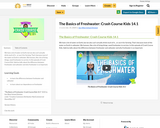
We have a lot of water on Earth, but we also can't actually drink much of it... or use it for farming. That's because most of the water on Earth is saltwater. We humans, like a lot of living things, need freshwater to survive. In this episode of Crash Course Kids, Sabrina talks about the difference between freshwater and saltwater and why freshwater is so important.
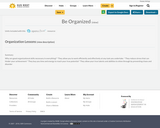
Why are good organizational skills necessary in everything?
* They allow you to work efficiently and effectively at any task you undertake.
* They reduce stress that can hinder your achievement
* They buy you time and energy to reach your true potential
* They allow your true talents and abilities to shine through by preventing chaos and disorder
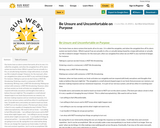
Our brains have an alarm system that works all on its own. It is called the amygdala, and when the amygdala fires off its alarm system we tend to listen. Which is great if we are actually in a fire, or actually being chased by a large wild animal, or actually our life is indeed in danger! However, for the most part, often our amygdala fires when we are NOT in any real kind of danger. For instance:
Talking to a person we don’t know, is NOT life threatening.
Ordering a meal in a restaurant, is NOT life threatening.
Writing a test, is NOT life threatening.
Making eye contact with someone, is NOT life threatening.
However, when we have anxiety our brain activates our amygdala and we respond with body sensations and thoughts that make us believe they just might be! The amygdala is a small almond shaped organ in our brain that processes our memory, our decision-making response and our emotional responses. It is part of our nervous system, and all too often it is working over-time.
To handle worry and anxiety we need to teach our brain to NOT turn on the alarm system. (The best part about a brain is that it is very capable of changing the way it thinks! This is called neuroplasticity.). We need to tell our brain:
- I am willing to feel UNcomfortable.
- I am willing to feel unsure and to NOT know what might happen next.
- I am willing to use my courage and do what I might not want to do.
- I can handle it if things do not go just perfect.
- I am okay with NOT knowing how things are going to turn out.
By saying this in our mind and by doing this we can change the response our brain makes. It will take time and constant repetition…but it can be accomplished. We can actually make a new neuropathway in our brain so that it no longer ‘fires up panic’ when we do things. It is like making a new walking path across the grass. Eventually, if we stay on the same new path, the old one fills in and a new path begins to appear.

These SMART Board files are a fun way for you and your students to interact while practicing adding and subtracting skills.
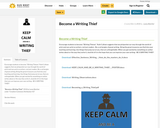
Encourage students to become “Writing Thieves” Ruth Culham suggests that we pickpocket our way through the world of print and non-print as writers, not just readers. Be a cat burglar of great writing. Bring the great treasures you find into your teaching and learning. Use things that jump out at you, that are unforgettable. When you get excited by something an author writes about or the way they write it, steal bit of it in the hope that you can improve your own writing –BE A WRITING THIEF!
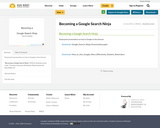
Powerpoint presentation on how to Google on the internet

The following is a poster on "What a Good Listener, Reader, Viewer does Before/During/ After Listening, Reading and Viewing".
The following are three posters on "What Good Speakers, Writers and Presenters do Before/During/After Speaking, Writing and Presenting".
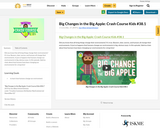
Did you know that all living things change their environments? It's true. Beavers, deer, worms, and humans all change their environments. It just so happens that humans change our environments in big, obvious ways. In this episode, Sabrina chats about how humans have been changing our environments for a long time!
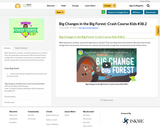
What do beavers, termites, and prairie dogs have in common? They all change their environments! We know that humans change their environments, but humans are animals and all animals change their environments just by living in them.

Photocopies of different assignments, reading material, references...
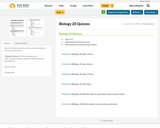
Quiz 5,6,7
Relationship in Ecosystems quiz
Relationships in Ecosystems quiz answers
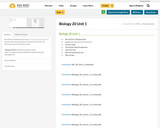
Bio 20 Unit 1 Notebook file
Lesson 1.1, 1.2, 1.3, 1.4, 1.5, 1.6, 1.7
Practice Quiz
The Stewie Head Assignment
Unit One Test
Microscope Review Lab
Microscope
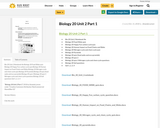
Bio 20 Unit 2 Notebook file
Biology 20 Food Webs quiz
Biology 20 Happy Fun carbon cycle quiz
Biology 20 Human Impact on Food Chains and Webs
Biology 20 Nitrogen cycle and chem cycle quiz
Biology 20 Pyramids
Biology 20 quiz (food webs and eco pyramids)
Biology 20 quiz 2
Biology 20 quiz 3 Nitrogen cycle and chem cycle questions
Biology 20 Soil questions
Soil 1, 2, 3, 4

2.10, 2.11, 2.12, 2.13, 2.14, 2.15, 2.15, 2.16, 2.17 Notes
Biology 20 population Problems
Bio 20 Unit 2b Upload
Biology 20 Climate worksheet
Biology 20 Climatogram Worksheet
Biology 20 NA Biomes Assignment
Biology 20 population Assignment
Biology 20 population and population growth definition activity
Biology 20 reviewing the biomes quiz final
Biology 20 reviewing the biomes quiz
Ch3Biomes & Climatograms
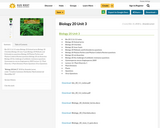
Bio 20 3.1 & 3.2 notes
Biology 20 Animal terms
Biology 20 Chordata
Biology 20 June 4 quiz
Biology 20 Mollusks and Echinoderms questions
Biology 20 Phylum Porfera and Phylum Cnidaria Review questions
Biology 20 rat dissection
Biology 20 the challenge of antibiotic resistance questions
Gymnosperms versus Angiosperms 2009
Lecture 12- Plant Diversity 1
Plant Divisions
Plants
Questions
Virus Questions
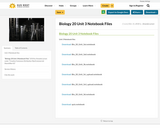
Unit 3 Notebook files
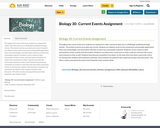
Throughout the course of the year students are expected to collect and write abstracts on 20 Biology and Biotechnology articles. The articles must be up to date and current. Students are asked to write on the connections and possible applications these new technologies and information will have on their lives and people in general. Students can be creative in their presentation of their articles and information. Students can make many connections to other material covered in the course and comment on that as well.
Students have become somewhat of an expert on the topic they have done a particular article on. During class students will sometimes volunteer and sometimes be asked for their expertise during a class discussion. This often creates some good discussions that hopefully make students think.
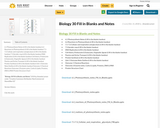
6.1 Photosynthesis Notes & fill in the blanks handout
6.2 Reactions to Photosynthesis & fill in the blanks handout
7.1-7.2 Cellular and respiration and glycolysis & fill in the blanks handout
7.3 Aerobic resp & fill in the blanks handout
DNA Replication & fill in the blanks handout
Cell theory, Prokaryote & Eukaryote, Organelle Jigsaw & fill in the blanks handout
Passive and Active Transport & fill in the blanks handout
Protein Synthesis & fill in the blanks handout
Unit 1 Outcome Note Outline & fill in the blanks handout
Outcome 1 Chemical Reactions
Outcome 2 Enzyme notes, Carbs & Lipids, Proteins, DNA & RNA
Protein Structure Chart
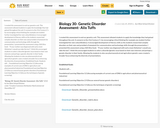
I created this assessment to end our genetics unit. This assessment allowed students to apply the knowledge they had gained throughout the unit. It connects to the 21st Century C's by encouraging critical thinking (for example one student further investigated her own colourblindess), it encouraged development of literacy skills as the students researched complex disorders on their own and provided a framework for communication and technology skills through the presentation. I presented this assessment using a Still Alice hook - "If your mother was diagnosed with early onset Alzheimer's would you take the test". I think this encouraged students to select a disorder/genetic issue based on their own interests and perhaps a genetic disorder in their family. Allowing the students to also use pharmaceutical and agriculture genetic cases created a broader focus enhancing the diversity of presentations.
Established Goals:
Students will…..
Foundational Learning Objective 3.2 (discussing examples of current uses of DNA in agriculture and pharmaceutical industries)
Foundational Learning Objective 2.9 (Discuss several human genetic disorders)
Foundational Learning Objective 3.3 (discuss the techniques of genetic screening).